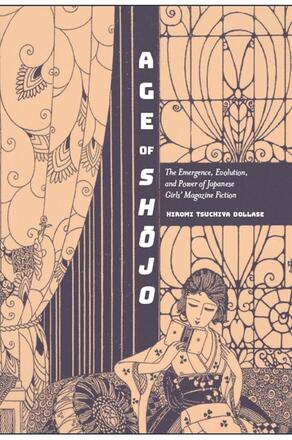
Age of Shōjo
The Emergence, Evolution, and Power of Japanese Girls' Magazine Fiction
Alternative formats available from:
Examines the role that Japanese girls’ magazine culture played during the twentieth century in the creation and use of the notion of shōjo, the cultural identity of adolescent Japanese girls.
Description
Hiromi Tsuchiya Dollase examines the role that magazines have played in the creation and development of the concept of shōjo, the modern cultural identity of adolescent Japanese girls. Cloaking their ideas in the pages of girls' magazines, writers could effectively express their desires for freedom from and resistance against oppressive cultural conventions, and their shōjo characters' "immature" qualities and social marginality gave them the power to express their thoughts without worrying about the reaction of authorities. Dollase details the transformation of Japanese girls' fiction from the 1900s to the 1980s by discussing the adaptation of Western stories, including Louisa May Alcott's Little Women, in the Meiji period; the emergence of young female writers in the 1910s and the flourishing girls' fiction era of the 1920s and 1930s; the changes wrought by state interference during the war; and the new era of empowered postwar fiction. The book highlights seminal author Yoshiya Nobuko's dreamy fantasies and Kitagawa Chiyo's social realism, Morita Tama's autobiographical feminism, the contributions of Nobel Prize–winning author Kawabata Yasunari, and the humorous modern fiction of Himuro Saeko and Tanabe Seiko. Using girls' perspectives, these authors addressed social topics such as education, same-sex love, feminism, and socialism. The age of shōjo, which began at the turn of the twentieth century, continues to nurture new generations of writers and entice audiences beyond age, gender, and nationality.
Hiromi Tsuchiya Dollase is Associate Professor of Japanese at Vassar College.
Reviews
"…Age of Shōjo is a major contribution to the field of shōjo studies. It speaks equally to scholars of Japanese popular culture (particularly shōjo manga) and Japanese literary studies. The writing style is lucid and engaging and is accessible to scholars and students beyond the field of Japanese studies. It will also appeal to readers interested in girls' studies and gender studies more broadly." — Japan Review
"This is an ideal book for those looking to grasp an overview of girls' fiction in Japan … The book is relatively short and the writing is clear and easy to follow, making it suitable for use in the classroom. While the list of works and authors discussed is understandably selective, it succeeds in narrativizing the development of girls' fiction in modern Japan through some of its most important works and figures, offering a balanced mixture of general survey and close reading." — East Asian Publishing and Society
"Dollase's book is an important contribution." — Monumenta Nipponica
"Hiromi Tsuchiya Dollase's monograph Age of Shōjo is a welcome contribution to the body of academic literature on Japanese women's writing in the twentieth century … The excellent writing, editing, formatting, and illustrations of Age of Shōjo come together to make this monograph as delightful to read as the stories under analysis, and it is certain to inspire academic interest and perhaps even nostalgia in many readers." — Pacific Affairs
"This ambitious book provides a clear and readable narrative of the shōjo or "girl" in modern Japan … The book exhibits excellent primary research and should be highly accessible, including for an undergraduate audience." — Journal of Japanese Studies
"Dollase has written a brilliant history and analysis of the growth in female fiction genres and the boom in publications targeting this culture of young female readers." — CHOICE
"This book provides many fascinating, perceptive, and fresh insights into a variety of aspects of girls' literature and culture, which have not yet been discussed in English." — Helen Kilpatrick, author of Miyazawa Kenji and His Illustrators: Images of Nature and Buddhism in Japanese Children's Literature